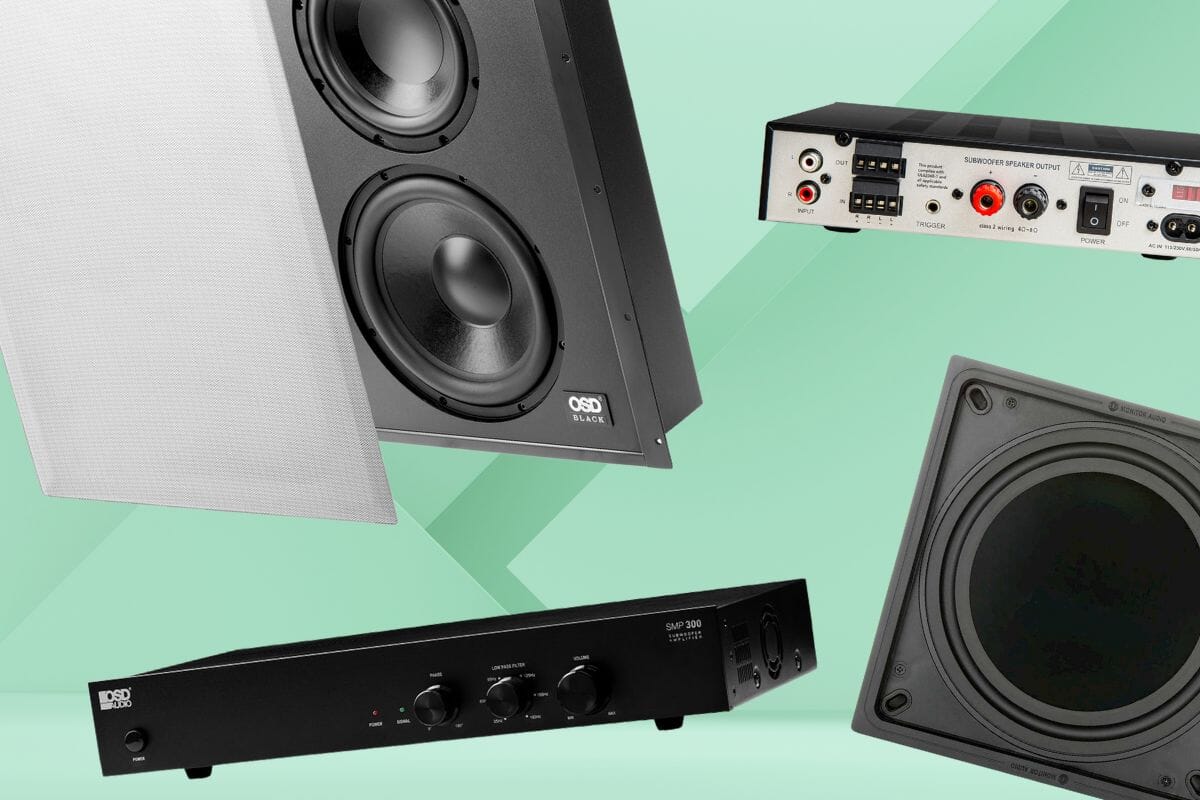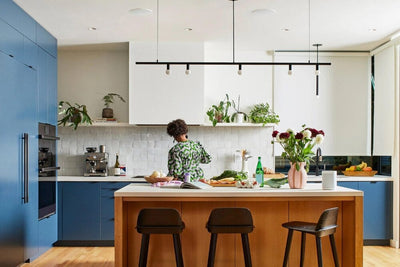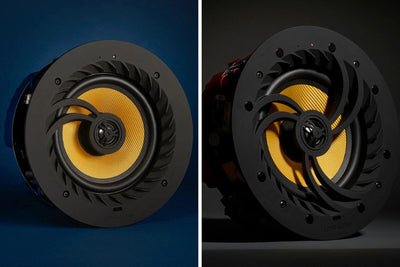Transform your home audio and home cinema experience without sacrificing precious floor space, that's the promise of in wall subwoofers.
Gone are the days when achieving deep, room-filling bass meant accepting bulky boxes dominating your living room corners.
In wall subwoofers are revolutionising how UK homeowners approach home audio, offering the perfect solution for those who refuse to compromise between exceptional sound quality and elegant interior design.
These innovative systems deliver powerful low-frequency performance whilst remaining completely invisible, seamlessly integrated within your walls.
Whether you're an audio enthusiast seeking the ultimate home cinema experience, a homeowner with space constraints, or simply someone who values clean, uncluttered living spaces, this comprehensive guide is designed specifically for you.
We'll explore everything from the technical fundamentals to practical installation considerations, helping you make an informed decision about whether in wall subwoofers are right for your home.
By the end of this guide, you'll understand exactly how in-wall subwoofers work, their advantages over traditional alternatives, what components you'll need, and how to achieve professional-quality installation results.
What Are In Wall Subwoofers?
An in-wall subwoofer is a passive bass driver that's permanently mounted within your wall cavity, designed to reproduce low-frequency sounds (typically below 80Hz) with remarkable precision and power.
Unlike traditional freestanding subwoofers that sit on your floor, these systems become an integral part of your room's architecture.
These systems are typically installed during construction or renovation projects, though retrofit installation is certainly possible with the right planning.
The subwoofer driver sits flush with your wall surface, covered by a removable grille that can be painted to match your décor, making the entire system virtually invisible to guests.

What makes them particularly appealing to UK homeowners is their ability to deliver exceptional bass performance without the visual impact or space requirements of traditional subwoofers, a crucial consideration in our typically smaller living spaces.
Key Benefits of In Wall Subwoofers
Space-Saving Design: Invisible Bass Without Floor Clutter
The most obvious advantage of in wall subwoofers is their complete elimination of floor space requirements.
Traditional freestanding subwoofers can occupy significant room area, particularly problematic in smaller UK homes where every square metre counts.
By integrating into your walls, these systems free up valuable living space whilst delivering comparable or superior bass performance.
This space-saving approach is particularly beneficial in family homes where floor-standing subwoofers can become obstacles.
Aesthetic Advantages: Seamless Integration with Room Décor
In wall subwoofers offer unmatched aesthetic flexibility.
The grille can be spray painted to match your wall colour, making the system completely invisible to casual observers. This seamless integration means no more compromising your interior design vision or arguing with partners about subwoofer placement.
For homeowners who've invested significantly in their interior décor, the ability to achieve powerful bass without visual intrusion is invaluable.
The clean, minimalist appearance particularly suits contemporary design trends popular in modern UK homes.
Child & Pet Friendly: No Exposed Drivers or Cables
Families with young children or pets will appreciate the safety benefits of in wall installation.
There are no exposed drivers to damage, no trailing cables to trip over, and no heavy cabinets that could tip or be knocked over.
Let’s just say that my gloss black Monitor Audio freestanding subwoofer has taken on a few scuffs & scratches over the last 10 years thanks to my children using it as a table for their toys!
The flush-mounted grille provides protection whilst maintaining full acoustic performance.
Compatibility: Use Any Amplifier With Subwoofer Output
Modern in wall subwoofers work seamlessly with virtually any audio system featuring a subwoofer output.
This includes popular streaming systems like Sonos, WiiM, traditional AV receivers, and dedicated stereo amplifiers.

This universal compatibility means you're not locked into specific brands or systems, providing excellent future-proofing for your investment.
It’s also worth noting that some subwoofer amplifiers such as the OSD Audio SMP200 and SMP300 have speaker-level inputs so you can actually use them with any amplifier regardless of whether or not it has a subwoofer output.
In Wall vs Freestanding Subwoofers
If you’re reading this blog you’re probably already swaying towards the idea of a discreet in-wall subwoofer, but it’s important to understand the fundamental differences between in-wall and freestanding subwoofers.
Here's a freestanding subwoofer:

They are big, powerful units that usually sit in the corner of your room. They're undoubtedly powerful and will transform your home cinema or audio performance.
But they are quite large by design and in modern homes where minimalism is key, they aren't always the best option.
Here's a list of the key differences between freestanding subwoofers and in-wall subwoofers, this helps clarify why you might choose one approach over the other.
- Space & Aesthetics: The most obvious difference is physical presence. Freestanding subwoofers occupy floor space and remain visible as separate components, whilst in wall systems integrate seamlessly into your room's architecture. For UK homes where space is often at a premium, this invisible installation can be transformative.
- Installation Requirements: Freestanding subwoofers offer plug-and-play simplicity, unbox, position, and connect. In wall systems require planning, wall cutting, and cable running, representing a more significant initial commitment but delivering permanent integration.
- Performance Characteristics: Both approaches can deliver exceptional bass, but freestanding subwoofers can out perform in wall versions. Freestanding subwoofers also offer easy repositioning for optimal placement, whilst in wall systems require careful initial placement planning.
- Flexibility & Future Changes: Freestanding subwoofers can be easily moved, upgraded, or taken to a new home. In wall systems become permanent fixtures, offering long-term value but reduced flexibility for future changes.
- Options: You’ll find lots of freestanding subwoofer options from lots of brands in different sizes, colours, powers, budgets etc. Whereas for in wall subwoofers your options are a lot more limited and generally costs more than their freestanding counterparts.
The choice often comes down to priorities: immediate simplicity versus long-term integration, flexibility versus permanence, and visible performance versus invisible elegance.
We definitely see the appeal of discreet audio and an in-wall subwoofer can easily add a massive amount of depth and feeling into your music whilst remaining hidden.
Essential Components Explained

Passive Subwoofer Driver
A passive subwoofer driver contains no built-in amplification, it’s essentially a specialised speaker that relies on an external amplifier to power it.
This design offers several advantages: you can choose an amplifier that perfectly matches your requirements, serviceability is often simpler, and performance can be superior since the driver isn’t tied to a fixed built-in amp.
The "passive" designation simply means you'll need a separate subwoofer amplifier, which can be positioned alongside your stereo amplifier.
Driver Sizes
In wall subwoofers are produced in a range of driver sizes, each with distinct performance characteristics:
- 8-Inch Drivers: best suited to smaller rooms or apartments, delivering clean, tight bass that complements compact speaker systems without overwhelming the space.
- 10-Inch Drivers (Most Common): the most popular choice for UK homes, striking a balance between depth, power, and practicality. They integrate well with home cinema setups or stereo systems, offering impactful bass while remaining manageable for DIY or professional installation.
- 12-Inch & Larger Drivers: designed for larger living rooms or dedicated home cinema spaces. These produce powerful low-end extension and cinematic bass impact but require more amplifier power and deeper wall cavities for installation.
Mounting Mechanisms & Enclosures
Most in wall subwoofers are fitted using either clamp-style mounting systems (similar to ceiling speakers) or screw-mounting brackets.
A secure mount is essential, not only to hold the driver in place but also to provide an airtight seal, preventing air leaks that can reduce bass performance.
Wall cavity depth varies depending on driver size – typically 90-150mm for 8-10 inch models, and 150mm+ for larger drivers.
Some subwoofers are designed to use the wall cavity itself as a back box, which saves space but may limit consistency.
Higher-end models such as the OSD Audio SC800D or the Monitor Audio IWS are supplied with a dedicated sealed back box, ensuring optimal bass performance regardless of the wall structure.

Subwoofer Amplifier
Unlike regular speakers, subwoofers are designed to reproduce very low bass frequencies that demand a lot of power to sound clean and impactful.
An in wall subwoofer on its own cannot generate this power, which is why a dedicated subwoofer amplifier is essential.
This subwoofer amplifier provides the necessary wattage to drive the subwoofer effectively, ensuring deep, controlled bass without distortion.
It also allows you to fine-tune the performance by adjusting crossover settings, phase control, and gain to match the subwoofer with the rest of your audio system.
Typical features of a subwoofer amplifier include:
- High Power Output: supplies the energy needed for low-frequency performance.
- Crossover Control: lets you set the frequency point where the subwoofer takes over from your main speakers.
- Phase Adjustment: aligns the timing of the subwoofer with your other speakers for tighter bass.
- Gain Control: adjusts the subwoofer’s volume level to balance with the rest of your system.
- Auto On/Standby: saves energy by powering the amp only when it detects a signal.
- Multiple Inputs/Outputs: flexibility for connecting to different AV receivers, pre-amps, or audio systems.
Without a dedicated amplifier, the subwoofer would either struggle to perform or risk being damaged by insufficient or distorted power from a standard hi-fi amplifier.
For example if you’re installing a WiiM AMP to power some ceiling speakers, you’d then need a separate subwoofer amplifier that plugs into the WiiM AMP to power your in wall subwoofer.

Subwoofer Cabling
An in wall subwoofer system requires two different types of cabling: one to send the audio signal from your main amplifier or AV receiver to the subwoofer amplifier, and another to deliver the amplified power to the subwoofer driver itself.
Using the right cable type and thickness ensures reliable performance and clean, distortion-free bass.
Speaker Cable – Amplifier to Subwoofer Driver
Heavy-duty speaker cable is used to connect your subwoofer amplifier to the in-wall driver.
The thickness of the cable (gauge) is important, as longer runs need thicker conductors to avoid power loss.
- Up To 10 Metres: 42-strand speaker cable is suitable.
- Over 10 Metres: Upgrade to a thicker 79-strand cable for maximum efficiency and performance.
Subwoofer Interconnect Cable – Main Amplifier to Subwoofer Amplifier
A dedicated subwoofer interconnect cable, typically RCA-terminated, carries the low-frequency signal from your stereo amplifier or AV receiver into the subwoofer amplifier.
Most modern amplifiers and receivers feature a dedicated “Sub Out” or “LFE Out” port – commonly found on models such as the WiiM Amp, Sonos Amp, and many AV receivers.
Quality matters with subwoofer interconnects, especially over longer distances. Always choose a properly shielded cable to prevent interference and maintain a clean, strong signal.
Basic Setup - How It All Fits Together
Setting up an in wall subwoofer system is straightforward once you understand how the components connect together.
In the simplest terms:
Main Amplifier → Subwoofer Amplifier → In Wall Subwoofer Driver
Here’s a step by step process:
- Connect your stereo amplifiers “SUB” Out port to the “Input” of the subwoofer amplifier - this may be with an RCA subwoofer cable or RCA to RCA cable depending on your amplifiers connections.
- Connect your subwoofer amplifier to the in wall subwoofer using a two core speaker cable.
- Set up the crossover and volume on the subwoofer amplifier and ensure your subwoofer is turned on in your stereo amplifier.
- You should now have bass from your in wall subwoofer, you can then move onto the fine-tuning stage.

This separation ensures your main amplifier handles the mids and highs, while the dedicated subwoofer amplifier powers the low frequencies, giving you clear, powerful, and balanced sound.

Configuration & Calibration
Amplifier Settings & Crossover Adjustment
Start with conservative settings: crossover frequency around 80Hz, gain at minimum, phase at 0 degrees.
Gradually increase gain whilst playing familiar music until bass integration sounds natural, avoid the temptation to over-emphasise bass.
Phase Alignment with Main Speakers
Phase adjustment ensures your subwoofer works in harmony with main speakers rather than fighting against them.
Play bass-heavy music and adjust phase control whilst listening at your normal seating position, choose the setting that provides the fullest, most natural bass.
Testing & Fine-tuning
Test your system with various music genres and film material.
Well-integrated bass should enhance the overall experience without drawing attention to itself.
If the bass sounds boomy, reduce gain or try different crossover settings.
If it sounds weak, gradually increase gain or check phase alignment.
Final Thoughts
In wall subwoofers represent the perfect marriage of performance and practicality for modern UK homeowners.
They deliver exceptional bass response whilst preserving precious living space and maintaining interior design integrity, crucial considerations in our typically compact homes.
The benefits extend far beyond mere space savings. Child and pet safety, universal compatibility with existing audio systems, and the potential for superior room coupling make in wall subwoofers compelling alternatives to traditional freestanding models.
Is an in wall subwoofer right for you?
If you value clean aesthetics, need to maximise living space, want enhanced safety for family members, or simply refuse to compromise between great sound and great design, the answer is likely yes.
The initial installation complexity pays dividends in long-term satisfaction and potentially increased property value.
For homeowners planning renovation projects or building new homes, incorporating in wall subwoofers from the outset offers the ideal opportunity to create truly integrated audio systems.
Even existing homes can benefit from retrofit installation with proper planning and execution.
Ready to transform your audio experience?
Browse our comprehensive range of in wall subwoofers and amplification systems, or contact our expert team for personalised advice tailored to your specific room and requirements.
Don't let space constraints or aesthetic concerns prevent you from enjoying the full-range audio experience you deserve.





